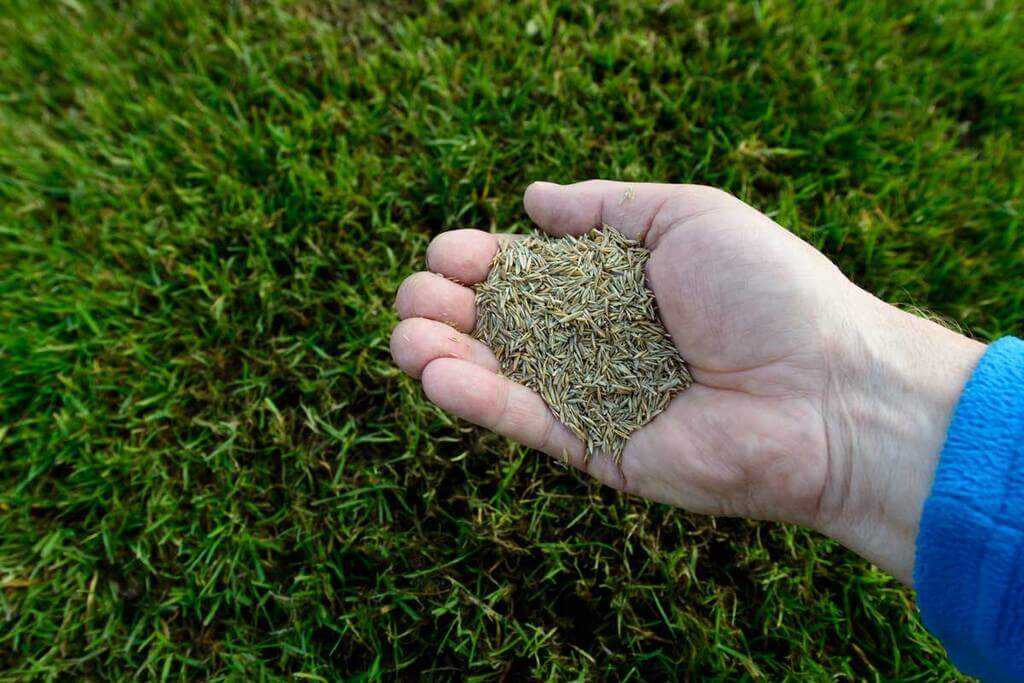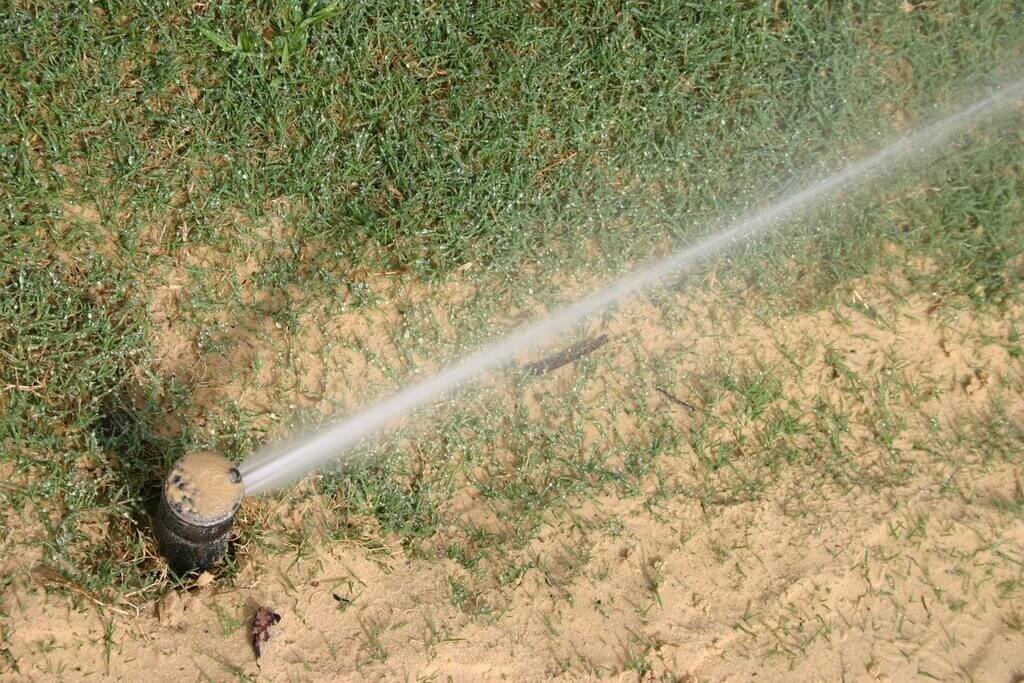Who doesn’t like greener backyards with natural plants, shrubs, trees, and grass growing all around?
As our open spaces are our breathing areas it is important to make sure that they are well-maintained and well-kept over time. Grass being one of the most primitive forms of landscaping can also be a tricky element to grow.
We all wish to have a good-looking lawn around our home, but not always do we want to spend hundreds on getting professional consultancy advice on it. So how can we plant grass in a budget-friendly way without burning our pockets?
Generally, a normal grass might take 7 to 30 days for its semination to begin. However, there are a host of other factors involved that influence how long does it take for grass to grow. Some of the factors can be the weather, grass, type, and soil, etc.
To have a better understanding of how long for a grass to grow, do read on. There are also some watering tips that you can refer to make sure that your grass is also well-maintained over time.
Understanding the Grass Seed Germination Process

The first thing that affects how long for the grass to grow is the type of seeds that will be used for the same. It entirely depends on the seeds, the areas from which they are procured to define the longevity and process of its growth.
Here are some of the common types of seeds that can be used for growing and also, the time that is required for them to germinate.
- Bentgrass – It is a popular perennial cool-season grass and is often used on golf courses. The point is that it has a green and fine texture to it which makes it suitable for the sport. The germination time for it is two weeks.
- Annual Ryegrass – It is one of the fastest-growing grass types. It is also very versatile in its look and finishes. Although, it has very little tolerance to cold. The germination time for it is five to 10 days.
- Kentucky Bluegrass – Being a hardy grass, it is very tolerant to cold weather. Although, it takes a longer period of growth time ranging from 10 – 21 days to germinate.
- Perennial Ryegrass – This type of grass goes great with foot traffic although it requires frequent watering. However, it is a speedy germinator as it requires only five to seven days and is a very popular grass for lawns.
- Red Fescue – This being a cool-season grass, it does well in shaded areas and requires very less water. The germination period is around 12 to 22 days.
- Zoysia Grass – It is a popular warm-season grass that has great sustenance qualities. It is drought tolerant and can handle foot traffic very well. Although it is a slow germinator, it typically needs 14 to 21 days to grow.
The Ideal Time To Plant Grass Seed?
Spring is a good time to plant many of the grass seeds mentioned in the list above. But it is not always the case for all grass species.
The best time depends on the location and soil type in relevance to the seed type you wish to plant. For example, if you live in a mild climate then a warm-weather grass seed would go well with the surrounding environment. If you reside in a cooler climatic zone, then a cool-weather grass seed like Kentucky Bluegrass or Bentgrass would go well with the surroundings. One point you need to make sure that spring won’t be an ideal time to plant seeds if you reside in a cool weather zone.
In case, you reside in a warm-weather climate and are now shifting to a cold-weather zone then do take professional help from a consultant who can guide you better on how long it takes for your grass to grow.
How Long Does It Take For Grass To Grow – General Tips

Here are some of the general tips you can refer to while making sure your grass is growing healthily.
Tip #1 – If there is a threat of frost within 60 days then do not attempt to plant a warm-season plant. It will cause the plant condition to deplete. In cooler climates, always think on the ground for 90 days.
Tip #2 – Cool season grasses always grow best during the daytime with a temperature that ranges between 60 and 75 degrees.
Tip #3 – When the temperature drops below 55 degrees then it is late for you to plant cool-weather grass. Remember that the weather governs everything!
Here Are Some of the Factors That Can Impact How Long for Grass to Grow
Since every planting situation has a unique backdrop of the weather conditions, soil type, and surroundings a variety of factors can impact how quickly or slowly the grass will grow.
Here are some of the reasons why you’re plant might be having trouble germinating:-
Use of the Wrong Seed Type
It is crucial to know which type of seed is best for the region you wish to grow your grass. This entirely depends on how long for grass to go within your gardens. There are varied online charts that can help you analyze the climatic situation and its relevance to your grass type.
You can always ask the nearby nursery for tips. The pro tip here is to not force any grass type that is not suitable to your climate, as maintaining it would be a task, and eventually, its cognition will deplete.
Not Testing the Soil
How long does it take for your grass to grow entirely depends on the type of soil that your seed wants? Solid varies in alkalinity and nutrient levels, therefore it is necessary to match the soil type with the grass. For this, a spoil test can be the ideal solution to make sure that you’re doing it right. You might need a pre-seeding fertilizer as well which can help in informing you of any soil preparation before the seeding process.
Paying Attention to the Seeding Rates
This is of the utmost importance as one grass requires two pounds of seeding per 1000 square feet while another type of grass might need five pounds per square foot. The key here is to read the package carefully for analyzing the best coverage rates for your seeds.
Bad Timing
Poor timing of the processes can also create a mess while growing your grass. Planting too close to the period where first is on the verge can lead to poor grass growth. Letting the oil get too dry can be one of the factors contributing to poor growth as well.
Watering Your Grass Seeds – How Long Does It Take for Grass to Grow

Appropriate watering to the grass seeds is equally important as planting them right for ensuring their long-term good health. If you overwater the seeds they tend to wash away the soil along with seeds. If you tend to underwater them then they might never sprout.
Here are some of the important tips which you can use for properly watering the seeds
Tip #1 – You need to keep waiting for the grass seeds regularly to make sure that the two inches at the top remain most at all time but not sopping wet.
Tip #2 – A moist and inviting environment is necessary for the seeds to germinate. Before planting the seeds you might want to water the area with a dept of 6 to 8 inches.
Tip #3 – You need to keep monitoring the lawn’s progress as the seeds germinate. Do keep an eye on how the sun impacts its growth over the shady as well as sunny areas.
Tip #4 – Once the entire lawn is established, try giving it about one inch of water every week. Water it in the morning to avoid evaporation as it tends to face the plant growth. Also, avoid them watering at night as the water might sit on the surface and there could be fungus growth.
After the grass seeds have germinated and you have been regularly watering it well, the goal is to promote deep root development. This is necessary to keep the growth long-lasting and healthy. You can gradually decrease the frequency of watering and increase the duration.
Here’s how you can break it down:-
- From Day 1 to Day 14 – Water for 15 minutes about four times a day as this is a crucial process of seeding and germination.
- From Day 15 to Day 21 – Water the grass for 30 minutes for just one time per day
- From Day 22 to day 28 – Water the grass for over 40 minutes for every alternate day.
- From Day 29 and beyond – Water the grass for 45 minutes only three times per week or even one time, a week would be enough if the quantity is large. You can even skip watering when there is rainfall.
You can contact your country’s Cooperative Extension Service for any further guidelines or details you might require regarding irrigating your lawn area through sprinkler systems as this will save your manual labor.
How Long For Grass To Grow – The Bottom Line
Make sure that you are well-researched before you start planting your grass seeds. For the best outcome make sure that you’ve chosen the best seeds as per your climatic conditions and soil type. Pay attention to the smaller details like soil, outdoor temperature, shady and sunny areas, regular watering, etc.
If you have any queries you can always ask the nursery or a landscape consultant who can guide you on these grounds. Having a local nursery’s guidance can be a great tool to have as they are well-versed with the surrounding conditions for better green growth.
Having your naturistic greens around your gardens or backyards is an asset as it gives you several health benefits as well. Greenery also ensures a sustainable approach towards local living. Although plants require maintenance and constant care, they can be a resourceful element to have within your confined spaces.
To get more information:-

